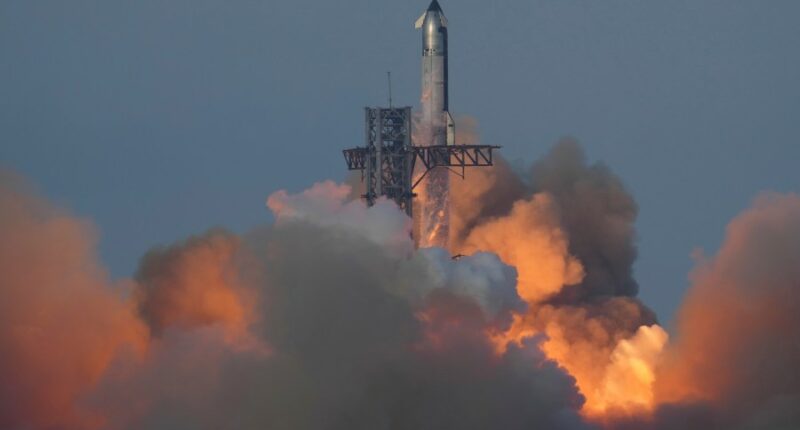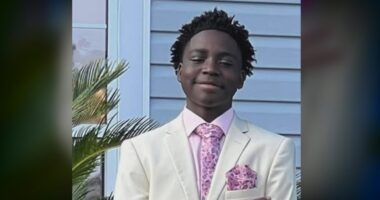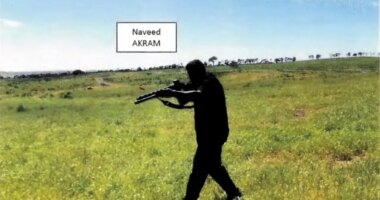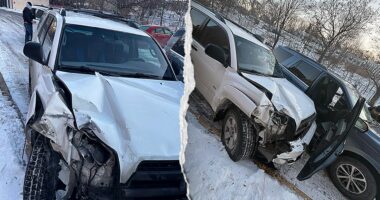Share this @internewscast.com

On Tuesday night, SpaceX conducted a new test launch of its massive rocket, Starship, which successfully delivered a mock payload consisting of eight dummy satellites into space for the first time. The spacecraft coasted through space for just over an hour before making a splashdown in the Indian Ocean as intended.
Taking off from SpaceX’s launch site, Starbase, in South Texas shortly after 6:30 p.m., this marked the 10th trial for the world’s largest and most powerful rocket. This rocket is anticipated by both SpaceX and NASA to play a crucial role in returning astronauts to the moon.
NASA has ordered two Starships to land astronauts on the moon later this decade, and SpaceX CEO Elon Musk’s ultimate goal is Mars.
No crew members were aboard the demo launch.
This test notably featured the successful return of the Super Heavy Booster, which landed in the Atlantic after performing a landing-burn engine test sequence.
The Starship went on to orbit the Earth, transitioning from daylight in Texas to night and back to daytime, before its planned ocean splashdown. Just before touching the water, its engines ignited to reposition the craft upright, ensuring it entered the water with the nose cone facing upward.
This successful demonstration followed a series of setbacks over the past year. Previous attempts in January and March concluded soon after launch, scattering debris into the ocean. The ninth test in May ended when the spacecraft lost control and disintegrated.
To address these issues, SpaceX subsequently revamped the Super Heavy Booster, adding larger and more robust fins for improved stability, as detailed in a company statement on the social platform X earlier this month.
The first Starship exploded minutes into its inaugural test flight in 2023.
SpaceX’s first batch of Starlink satellites were launched in 2019 from a Falcon rocket that lifted off from Cape Canaveral.
___
The Associated Press Health and Science Department receives support from the Howard Hughes Medical Institute’s Department of Science Education and the Robert Wood Johnson Foundation. The AP is solely responsible for all content.
















